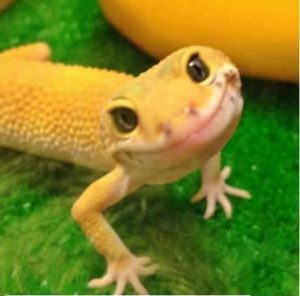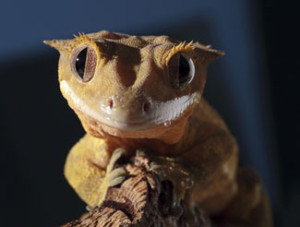When I tell people lizards and snakes are Salmonella factories, they look at me like I’m hysterical.
Maybe they’ll listen to Scott Weese, a veterinary professor at the University of Guelph and author of the Worms and Germs Blog.
Weese writes, contact with reptiles such as geckos has been a known risk factor for human salmonellosis for years. That’s a big part of the reason for recommending that high risk people (i.e. those less than 5 years of age, over 65 years of age, pregnant, or immunocompromised) have no contact (direct or indirect) with reptiles.
In this outbreak (Koski et al, Zoonoses and Public Health 2019), Salmonella Fluntern was the cause of infection in 12 people in 4 US states (Oregon, California, Iowa and New York). The median age of those affected was 5 years, with a range from less than 1 to 58 years of age (so much for the “keep young kids away from reptiles” recommendation). No one died, but 3 people (25%) were hospitalized. Most people reported contact with leopard geckos, and the same bacterium was isolated from a gecko owned by one affected person.
No common source of geckos was identified and their bacteria were different enough genetically that a point source isn’t likely. Other gecko- or reptile-associated Salmonella Fluntern isolates were identified in bacterial databases from Europe. So, this suggests that Salmonella Fluntern is a reptile (or even gecko) associated strain, posing a broad risk to reptile/gecko owners.
This report doesn’t change any recommendations, but just shows (again) the issues that are involved. Reptiles shouldn’t be in high risk households. People with reptiles need to use some basic hygiene precautions to reduce their risk of infection. It’s not rocket science, but it’s often neglected.
More information about reducing the risk of infection associated with reptiles can be found in on the Worms & Germs Resources – Pets page.




 Acting on a tip from a "confidential informant", a pat-down search on Plank after he arrived at Los Angeles international airport last November on a United Airlines flight originating in Sydney found two money belts strapped to his chest containing two geckos, two monitor lizards and 11 skinks worth more than $US8500 ($A9400).
Acting on a tip from a "confidential informant", a pat-down search on Plank after he arrived at Los Angeles international airport last November on a United Airlines flight originating in Sydney found two money belts strapped to his chest containing two geckos, two monitor lizards and 11 skinks worth more than $US8500 ($A9400). Some kid in Meole Brace, near Shrewsbury, which is apparently in the U.K., found a four-inch gecko in broccoli purchased from supermarket Tesco.
Some kid in Meole Brace, near Shrewsbury, which is apparently in the U.K., found a four-inch gecko in broccoli purchased from supermarket Tesco. He believes the discovery is a world first and has handed the egg shell over to health authorities who will look for the presence of bacteria in the yolk and try to work out how the gecko got into the egg.
He believes the discovery is a world first and has handed the egg shell over to health authorities who will look for the presence of bacteria in the yolk and try to work out how the gecko got into the egg.